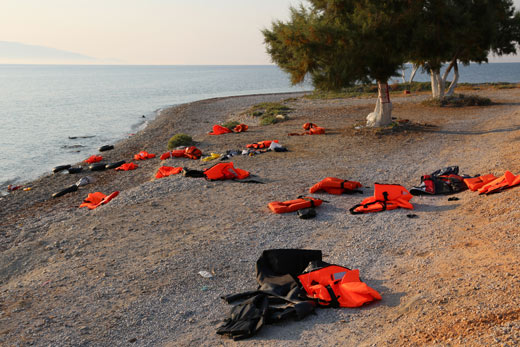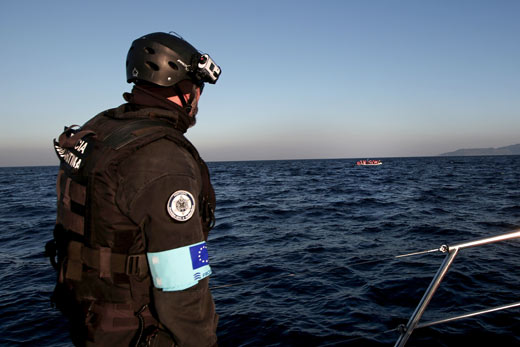OPINION
The structural flaw in the EU’s migration policy
The EU migration policy lacks a true understanding of the root causes. The approach is therefore ill-fitted for purpose, risks undermining development, and may even exacerbate fragility.
In 2015, the European Union (EU) adopted the European Agenda on Migration, which offered a comprehensive response to the increase in irregular arrivals at European shores.[1] The Agenda proposed a framework for better migration management, based on reforms to the common European asylum system and external borders management, as well as cooperation with third countries to reduce irregular migrant and address the “root causes” of forced displacement.
However, the EU and its member states external migration policy lacks a true understanding of those “causes.” Instead, actors responsible for home affairs were given an opportunity to extend their reach and duplicate domestic responses to irregular migration – predominately return policies and border management – and the ability to implement them in their relations with third countries. The result is an approach to migration and displacement in developing and middle-income countries, which is ill-fitted for purpose, risks undermining development, and may even exacerbate fragility. European cooperation with partner countries should be based on a conflict-sensitive and context-specific agenda, with a full analysis of socio-economic and development needs.

© Frontex
Life jackets abandoned at a beach in Lesbos 2015.
EU policies and publications often refer to migratory routes and, most commonly, to the “Central and Eastern Mediterranean Routes.”[2] Maps that depict these routes are drawn with arrows, having their heads in Europe and tails extending as far back as Nigeria, Ethiopia, Syria and Afghanistan. But the picture of migration and displacement in the Middle East and in Africa is much less focused on the European continent, and would be better depicted by concentric circles around countries of origin than by arrows. According to UN data, 36.3 million African migrants live outside their countries of origin.[3] Of those, 19.4 million live in other African countries, compared to 9.3 million who live in Europe. In West Africa, where free movement is both rooted in history and promoted by the Economic Community of West African States (ECOWAS), it is estimated that between 70 and 90 percent of cross-border movement is of people who remain within the region.[4]
The movement of displaced people in the Middle East follows roughly the same trends, with the vast majority of people who are forced to flee their home being displaced in their own country or in neighbouring countries. For example, between the years 2015-2017, the number of people who sought asylum in the EU from the three most common nationalities – Syria, Afghanistan and Iraq – was 1.5 million.[5] In comparison, the total number displaced people who remained within the borders of those three countries is estimated at 11 million[6] and the number of refugees hosted by neighbouring countries is over 8 million.[7]
It is clear then that the vast majority of migrants and displaced people stay close to their country of origin. Yet when EU member states failed to reach agreements on the internal aspects of migration management, such as responsibility sharing,[8] they increasingly reoriented European foreign and aid policies in an attempt to stop irregular migration to Europe’s borders.[9] As a result, the institutional structures that follow the external dimensions of the migration agenda are composed predominately of representatives with an expertise in justice and home affairs issues, rather that foreign affairs and development. They include the Justice and Home Affairs Council Configuration and the relevant working groups,[10] member state Interior Ministries, and the European Commission’s Directorate-General Migration and Home Affairs.

© European Union
A representative of Frontex agency during a patrol near the Greek island of Lesbos in 2015.
The prominence of the Home Affairs agenda in negotiations with third countries may also be due to some European member states not maintaining a permanent presence, such as an embassy, in the third countries with which migration dialogues are taking place. Lacking a history of relations that is based on mutual interests and a multidimensional contextual analysis, these member states observe countries in Africa and in the Middle East solely through the lens of arrivals to Europe.
The role played by home affairs actors results in the EU and member states often duplicating solutions which they use on their own territory to reduce the number of irregular migrants: support for restrictive migration policies,[11] increased investment in returns,[12] and increased border management and security cooperation.[13] A case in point is that only one per cent of the European investment in the dedicated fund for addressing displacement, migration and stability for Africa – the EU Emergency Trust Fund – has been allocated to facilitating safer movement across borders as of 1 January 2018.[14] Worryingly, the European Council has indicated its support for expanding this approach in the next EU Multiannual Financial Framework beyond the year 2021, by suggesting that “dedicated, significant” funding “for external migration management” should become a part of the EU’s next internal asylum, migration, border management and internal security funds.[15] This is likely to mean that home affairs policies and governance structure will increasingly dictate the EU’s approach to migration and displacement abroad.
Duplicating domestic solutions into foreign and development agendas can be a critical mistake. Such solutions are likely to have implications on the role of the diaspora, on communities’ resilience in border regions, as well as on stability, long term development and on respect for human rights. But European impact on interrelated areas will be overlooked, as long as the driving force behind them is the European interior agenda. Over time, they are likely to impact not only the small number of people who begin their journeys with the aim of reaching Europe, but also the displaced people and migrants who travel in regions far away from European borders. While the debate on Europe’s migration policy is ongoing at home, the issue of migration and displacement in third countries must return to where it belongs – as one of the issues covered by the EU and member states’ development agenda, not home affairs.

